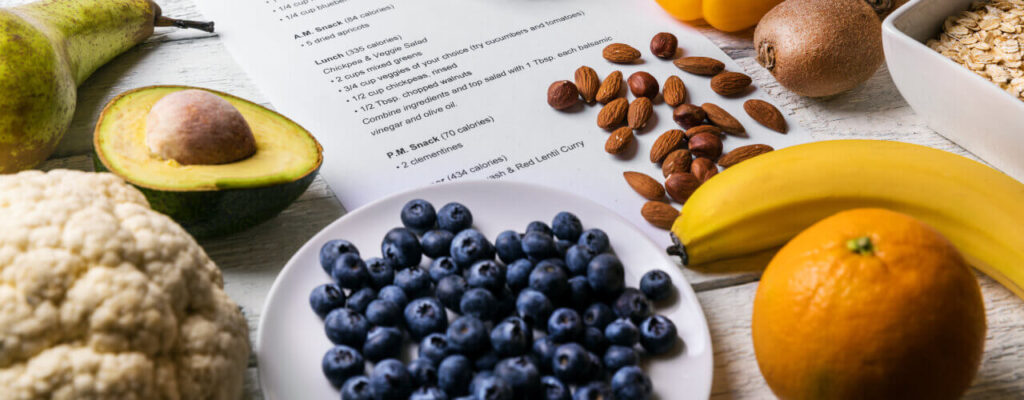6 Things In Your Diet That May Be Causing You Pain

We are what we eat, plain and simple. There’s no argument about it! Some people eat to live, others live to eat – and still others are feeding their chronic aches and pains without even realizing it.
If your pain issues have gotten steadily worse, maybe you need to look at your nutritional choices. What are you putting in your grocery cart every week that may be causing you pain?
Eating too much and/or eating the wrong things can fire up your inflammatory responses and contribute to muscle, nerve, or joint pain. For some chronic conditions, dietary changes can make the biggest difference in reducing or eliminating pain.
Certain foods have been known to alleviate inflammation, where some foods can aggravate it. In fact, according to Harvard Health Publishing, “A lot of chronic pain is the result of chronic inflammation, and the evidence is quite strong that your diet can contribute to increased systemic inflammation.”
Fortunately, you can reverse this trend by adopting a healthy nutritional strategy as part of a holistic physical therapy program. Physical therapists are not nutritionists, but providing nutritional advice to patients is well within the scope of a physical therapist’s duties!
Eating the right foods can improve your life
Increasing your physical activity can also help you get the most out of your new nutritional routine. For example, strength training is one activity you can do that builds muscle boosts your metabolic rate, helping your body burn calories more easily.
Other physical therapy techniques can also ease chronic aches and pains will help you become that much more mobile – enabling you to boost your workout regimen, lose more weight, and take more strain off of your joints and tissues.
Weight control is another vital aspect of pain management. Your physical therapy plan may include recommendations on how many calories you should consume, what kinds of foods you should eat to avoid getting fat, and any other necessary changes to your eating schedule or patterns.
The good news is that the right foods can fight inflammation just as well as the wrong foods make it worse. Did you know that simply switching to a Mediterranean diet can put you on a healthier, less painful path in life? It’s true.
The Mediterranean diet emphasizes fruits, vegetables, fish, whole grains, and healthy oils such as olive oil – all delicious choices with high nutritional value and low risk for inflammatory responses.
Even your choice of spices can make a huge difference in how you’re feeling. Turmeric, for example, is a potent natural anti-inflammatory. Your physical therapist can point you toward the right nutritional changes to help you control your pain.
How are diet and pain connected?
Certain kinds of foods are known to cause or aggravate inflammatory responses and chronic pain. You may be doing yourself more harm than good if you regularly consume:
- Heavily processed foods that include lots of sugar and/or trans fats (including cookies, donuts, and margarine)
- Potatoes, tomatoes, eggplant, and other members of the nightshade family
- Caffeinated foods and drinks
- White bread or other highly-processed carbs
- Alcohol
- Red meats such as steak, beef, or ham
These foods can make you hurt in many different ways. Sugar and aspartame can raise both your insulin levels and your pain sensitivity. Caffeine and tomatoes both raise your body’s acidity levels and promote inflammatory pain.
Poor dietary and nutritional choices can also increase your pain by increasing your waistline. Excessive quantities of rich, fatty, sugary, or starchy foods can cause your weight to balloon, especially if you lead a sedentary lifestyle.
This extra weight can aggravate arthritis pain and accelerate joint degeneration. It can also place extra strain on your muscles as they struggle to support your body weight. Obesity can even encourage the development of bulging or herniated discs, leading to neurological issues such as sciatica.
Conditions related to diet and nutrition
Several common conditions in America are directly related to diet and nutrition. Here are some conditions in which nutritional advice will likely be a part of the patient’s physical therapy regimen:
- Inflammation. American diets tend to have a lot of vegetable oils and other inflammatory foods in them. This can increase the pain from inflammation. In many cases, a physical therapist will prescribe a diet with more antioxidants and anti-inflammatory foods to help manage pain.
- Obesity. Being overweight causes undue stress and strain on a person’s joints and muscles. This causes pain, so they become more sedentary. Becoming more sedentary causes them to gain more weight, which leads to more pain. It’s a nasty cycle!
- Autoimmune disorders. The combined total of various autoimmune disorder patients (such as Crohn’s disease, multiple sclerosis, type 1 diabetes, and rheumatoid arthritis) now outnumber cancer patients in America by a wide margin. Autoimmune disorders are frequently linked directly to deficiencies in a patient’s diet.
- Diabetes. Diabetes and pre-diabetes pave the way for more serious conditions such as blindness, heart disease, and kidney disease. More than 90 percent of patients with diabetes also experience neuropathic pain. Diet and nutrition will play a key role in managing these conditions.
- Osteoarthritis. Obese patients are more likely to develop arthritis, especially in their knees. Once a person has been diagnosed with osteoarthritis of the knee, managing their weight becomes the most important key to managing arthritis pain.
Are you ready to start eating better?
If you suspect that your diet is negatively contributing to your pain levels, chances are you’re probably right. Eating for health can include eating for pain management. Contact The Physical Therapy Zone to learn how you can make this lifestyle strategy work for you!
Sources:
- https://www.clinicalpainadvisor.com/home/conference-highlights/painweek-2016/the-role-of-nutrition-in-modulating-chronic-pain/
- https://www.healthline.com/nutrition/mediterranean-diet-meal-plan
- https://health.clevelandclinic.org/anti-inflammatory-diet-can-relieve-pain-age/
- http://www.apta.org/PatientCare/Nutrition/
- https://ptandrehab.com/why-low-back-pain-may-not-go-away/
- https://www.arthritis.org/living-with-arthritis/arthritis-diet/foods-to-avoid-limit/food-ingredients-and-inflammation-10.php
- https://www.endocrineweb.com/news/diabetes/60722-mediterranean-diet-anti-inflammatory-foods-behind-health-benefits
